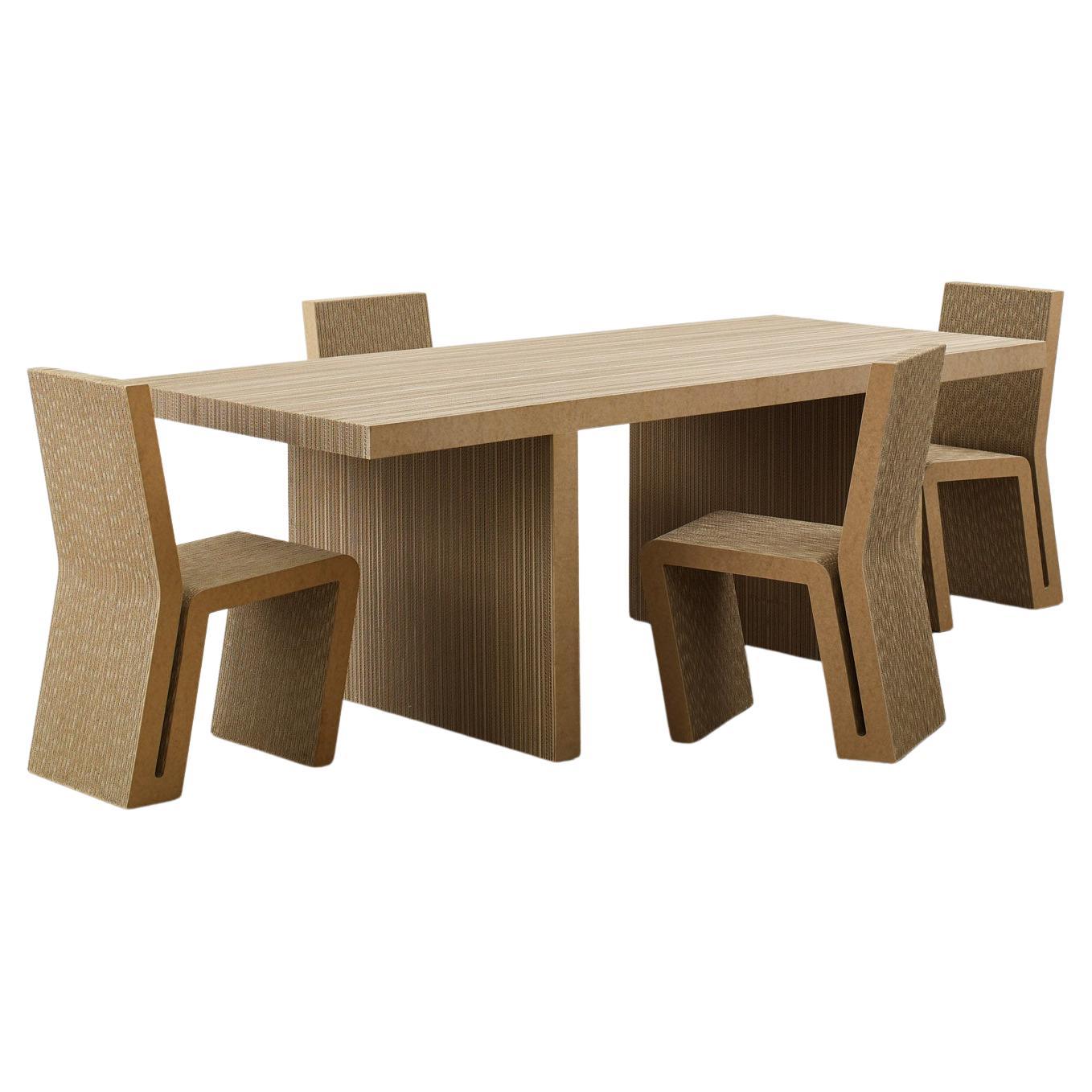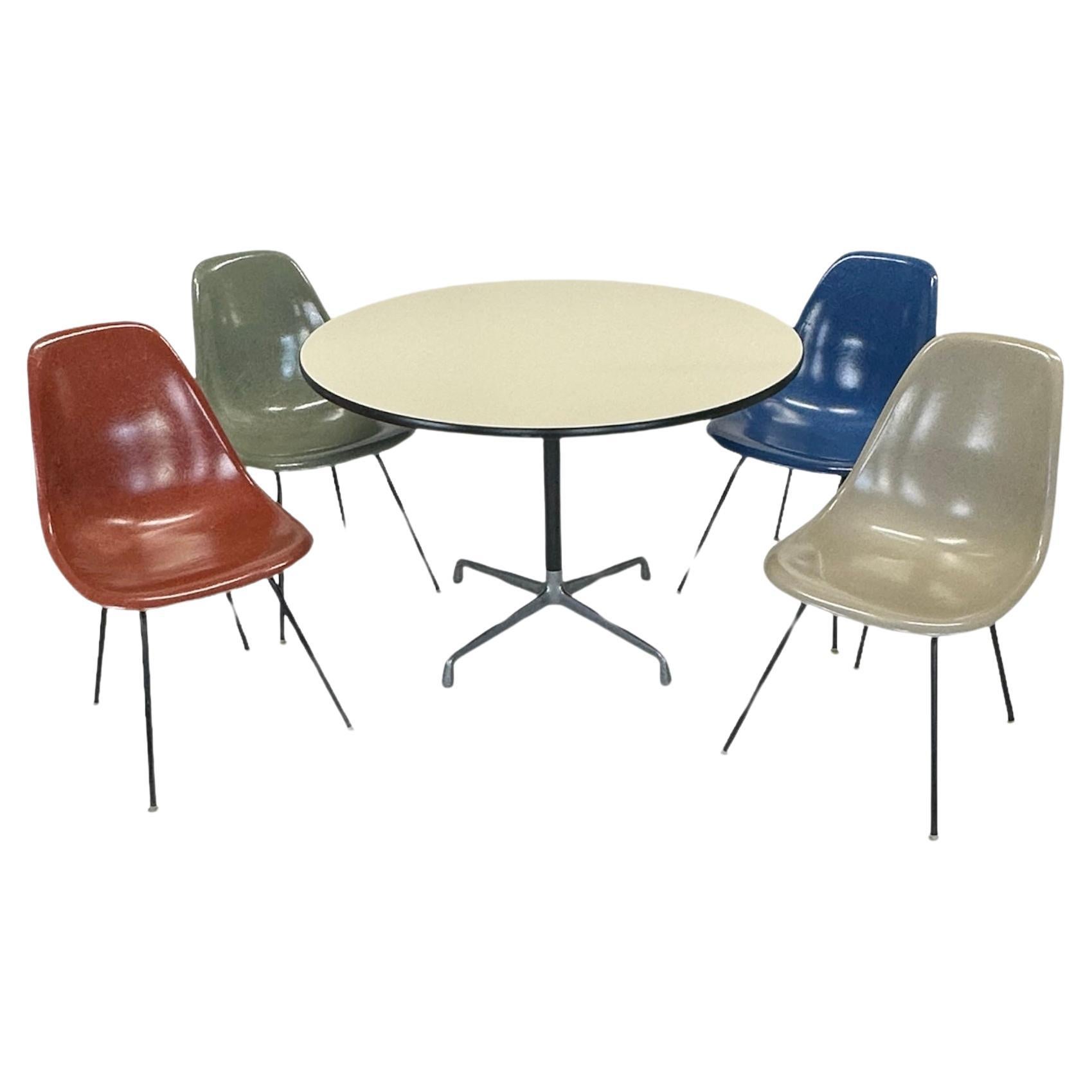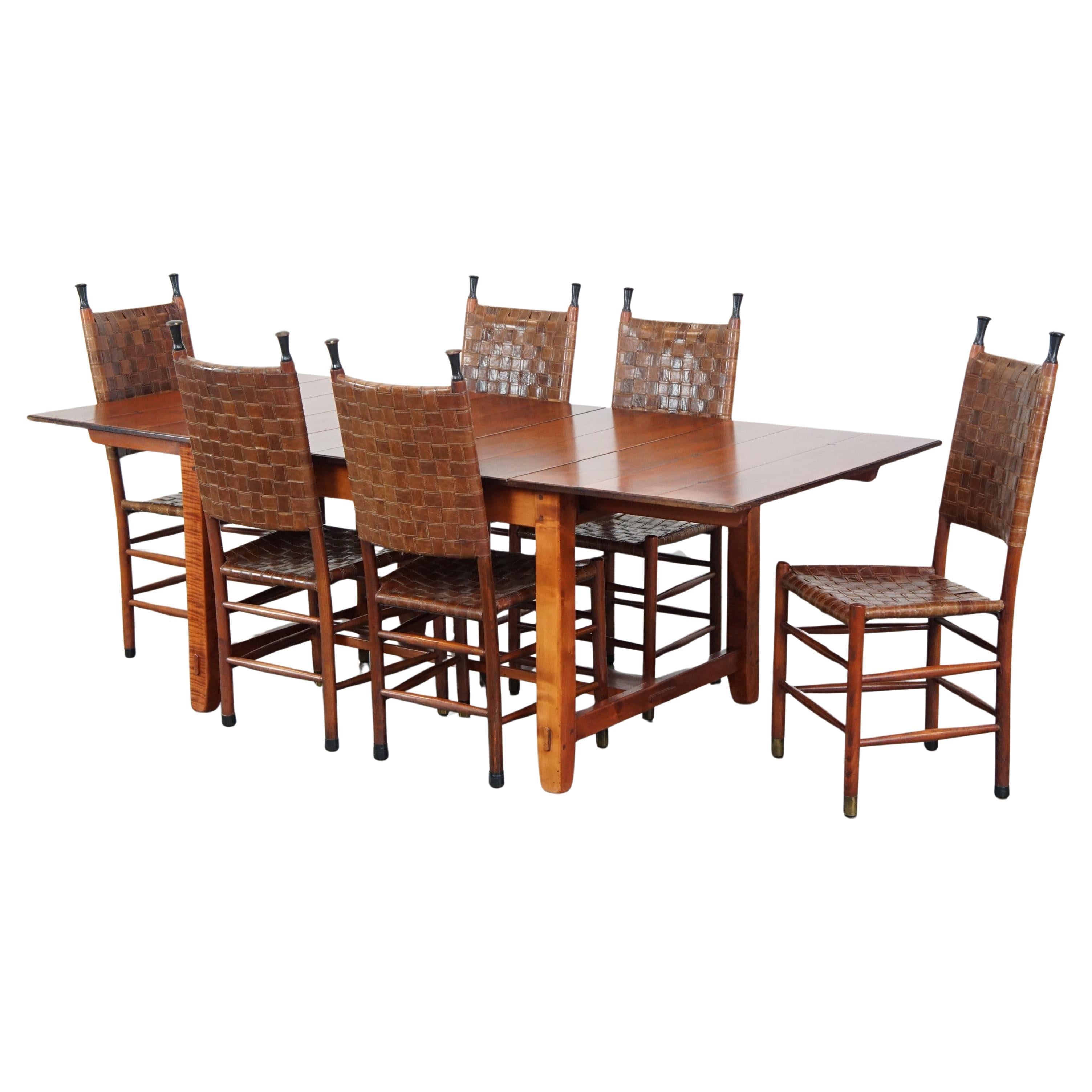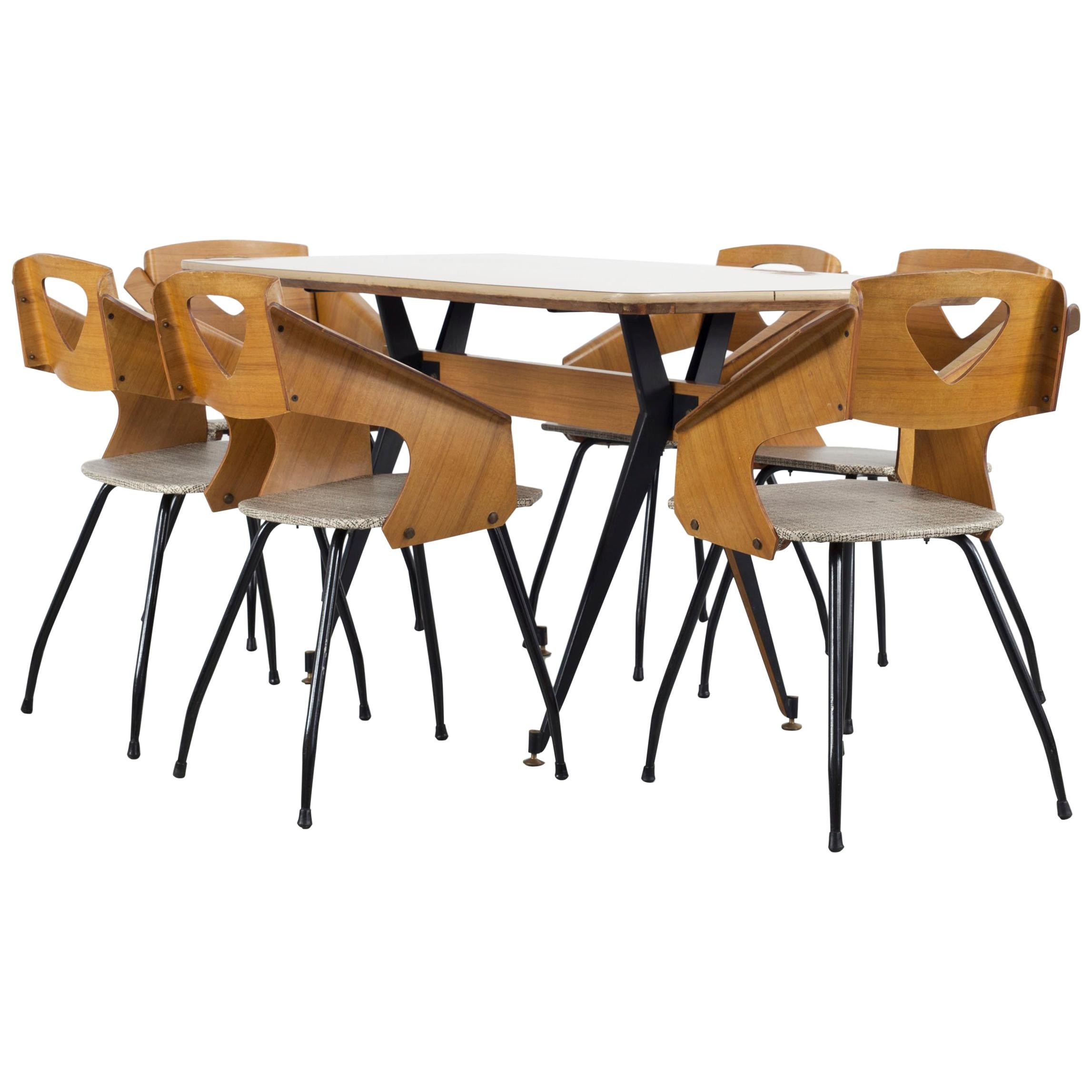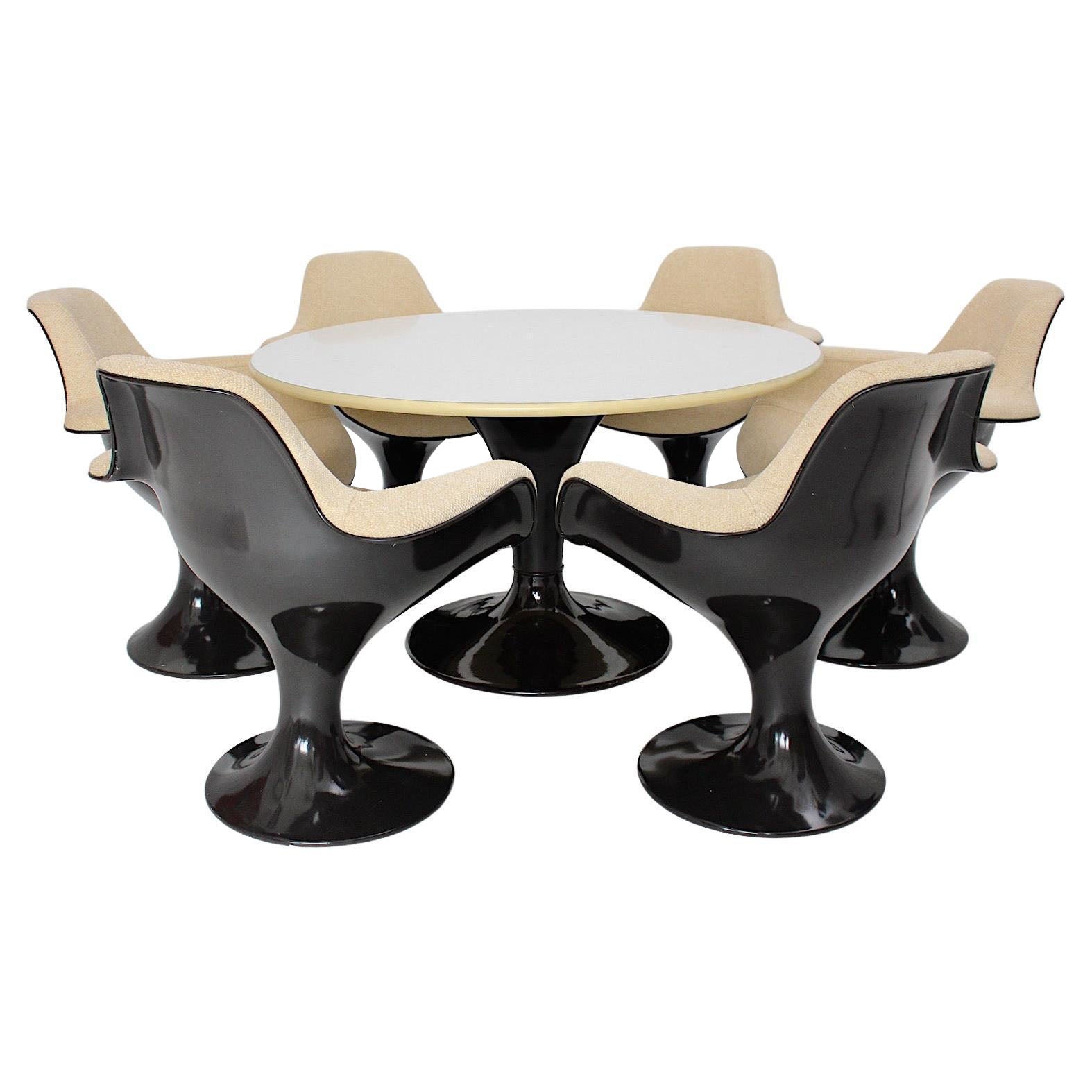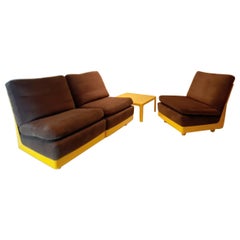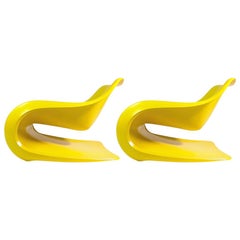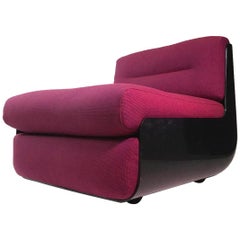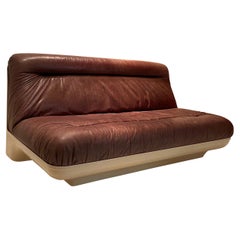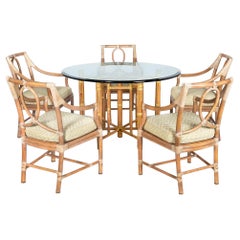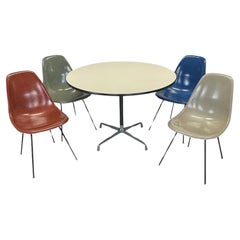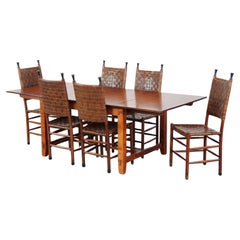Set of Five Orbit Chairs and Original Dining Table by Vitra, Germany, 1965
About the Item
- Creator:
- Dimensions:Height: 31.5 in (80 cm)Width: 20.48 in (52 cm)Depth: 17.72 in (45 cm)
- Sold As:Set of 6
- Style:Space Age (Of the Period)
- Materials and Techniques:
- Place of Origin:
- Period:
- Date of Manufacture:1965
- Condition:Wear consistent with age and use.
- Seller Location:Haderslev, DK
- Reference Number:1stDibs: LU1948325637422
Vitra
Design house Vitra has garnered international recognition for more than 70 years — the Swiss family-owned furniture company has outfitted public spaces as well as residential properties and offices worldwide. It has been a proponent of modernist design since the 1950s. While the brand is heralded for its collaborations with mid-century modern icons such as Verner Panton, Charles and Ray Eames, Alexander Girard and others, Vitra’s German campus is also home to buildings designed by legendary architects Zaha Hadid and Frank Gehry. Among them is the Vitra Design Museum, an independent cultural institution that displays two centuries of design today.
Vitra was established in Weil Am Rhein, Germany, in 1950 by husband and wife team Willi and Erika Fehlbaum. On a trip to New York several years later, Willi Fehlbaum encountered the work of design polymaths Ray and Charles Eames in a furniture store and immediately knew that he had found his bliss.
In 1957, Vitra entered into a licensing agreement with Herman Miller, which saw the company producing designs by George Nelson, the Eameses and others. Later, Vitra partnered with Verner Panton and created the Panton chair, which was the first chair ever crafted from a single piece of molded plastic (it was also the first piece to be independently developed by Vitra). After 27 years of establishing the Vitra brand, the Fehlbaums passed control to their two sons, Rolf and Raymond Fehlbaum.
When a fire destroyed the factory in 1981, the brothers developed the Vitra Factory Campus, subsequently taking the opportunity to redirect the architectural landscape of the company. They created a masterplan with Nicholas Grimshaw, and together they erected four buildings in just a few short years.
In 1988, with the passing of Ray Eames and the disbandment of the Los Angeles Eames office, Rolf and Raymond acquired the furniture design portion of her estate, including the Eames prototypes and experimental models, housed today in the Vitra Design Museum.
Rolf and Roy opened the Vitra Design Museum in 1989. This began a period rich with design relationships, including collaborations with Antonio Citterio, Jasper Morrison, Maarten van Severen, Philippe Starck, Alberto Meda and others.
In 2012, leadership passed to Nora, the third generation of the Fehlbaums. Nora Fehlbaum has, like her grandparents, expanded the company and brought it into the 21st century with the acquisition of Finnish furniture manufacturer Artek. Nora has turned the company’s focus to sustainability yet still maintains its international and cultural relevance legacy.
Find a collection of Vitra lounge chairs, tables, side chairs, sofas and other furniture on 1stDibs.
Herman Miller
No other business of its kind did more than the Herman Miller Furniture Company to introduce modern design into American homes. Working with legendary designers such as Charles and Ray Eames, George Nelson and Alexander Girard, the Zeeland, Michigan-based firm fostered some of the boldest expressions of what we now call mid-century modern style. In doing so, Herman Miller produced some of the most beautiful, iconic and, one can even say, noblest chairs, sofas, tables and other furniture ever.
Founded in 1923, Herman Miller was originally known for grand historicist bedroom suites: heavily ornamented wood furniture that appealed to a high-minded, wealthier clientele. The company — named for its chief financial backer — began to suffer in the early 1930s as the Great Depression hit, and D.J. De Pree, the company’s CEO, feared bankruptcy. In 1932, aid came in the form of Gilbert Rohde, a self-taught furniture designer who had traveled widely in Europe, absorbing details of the Art Deco movement and other modernist influences. After persuading De Pree that the growing middle class required smaller, lighter household furnishings, Rohde set a new course for Herman Miller, creating sleek chairs, tables and cabinetry that were the essence of the Streamline Moderne style.
Rohde died suddenly in 1944. The following year, De Pree turned to George Nelson, an architect who had written widely about modern furniture design. Under Nelson’s leadership, Herman Miller would embrace new technologies and materials and audacious biomorphic forms.
Some of the pieces the company produced are now emblems of 20th century American design, including the Eames lounge chair and ottoman and Nelson’s Marshmallow sofa and Coconut chair. Such instantly recognizable furnishings have become timeless — staples of a modernist décor; striking, offbeat notes in traditional environments.
Find a range of vintage Herman Miller office chairs, desks, coffee tables and other furniture on 1stDibs.
- ShippingRetrieving quote...Shipping from: Haderslev, Denmark
- Return Policy
More From This Seller
View AllVintage 1970s German Space Age Living Room Sets
Fabric, Plastic, Fiberglass
Vintage 1970s German Space Age Chairs
Fiberglass
Vintage 1970s Italian Space Age Lounge Chairs
Fabric, Fiberglass
Vintage 1970s German Space Age Sofas
Leather, Fiberglass
Vintage 1970s Danish Space Age Lounge Chairs
Chrome
Vintage 1970s Spanish Space Age Chairs
Aluminum
You May Also Like
Vintage 1970s Swiss Dining Room Sets
Paper
21st Century and Contemporary American Modern Dining Room Sets
Brass
Mid-20th Century American Mid-Century Modern Dining Room Sets
Aluminum, Steel
Early 2000s Dining Room Sets
Leather, Wood
Vintage 1950s Italian Mid-Century Modern Dining Room Chairs
Iron, Brass
Vintage 1970s Space Age Dining Room Sets
Metal
Recently Viewed
View AllRead More
The 21 Most Popular Mid-Century Modern Chairs
You know the designs, now get the stories about how they came to be.
A Guide to Herman Miller’s Most Iconic Furniture
The prolific manufacturer has partnered with many of the world’s top designers since opening its doors in 1923. Here are some of the company’s greatest hits, which helped transform the American home and office.
